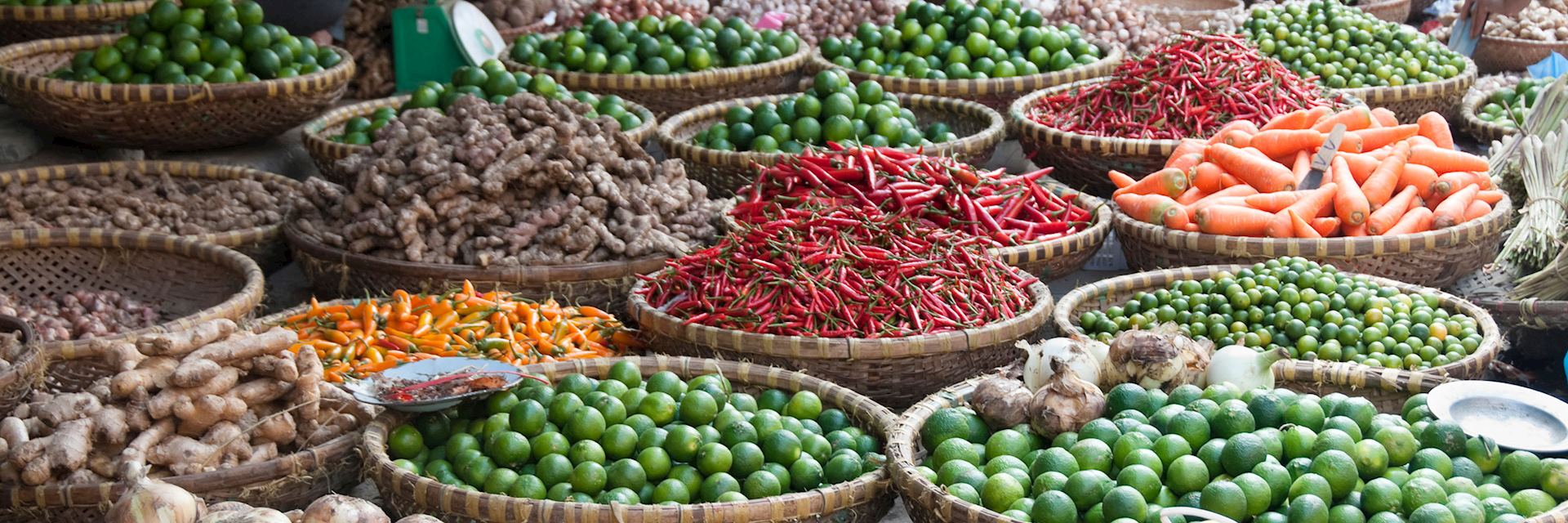Chinese and Vietnamese cuisine are popular food cultures in East Asia. Chinese cuisine is characterized by sweet, sour, salty and spicy flavors, which are achieved with a range of ingredients like soy sauce, ginger, and garlic. The cuisine uses cooking methods like stir-frying, roasting, steaming, and boiling. Vietnamese cuisine, on the other hand, relies heavily on vegetables, spices, and herbs for its fresh and herbaceous flavors. It emphasizes steaming, blanching and grilling, and uses ingredients such as lemongrass, mint, coriander, rice noodles, and fish sauce. Both cuisines have unique flavor profiles, and popular dishes such as Peking Duck, Ma Po Tofu, Pho, Banh Mi and Spring Rolls are enjoyed across the world.
Introduction
East Asia is a culinary melting pot, with diverse food cultures that have been influenced by local traditions, geography, climate, and migration patterns. In particular, Chinese and Vietnamese cuisine are two of the most popular food cultures in the region, and they both have unique characteristics that make them stand out. This article will compare and contrast the different aspects of Chinese and Vietnamese cuisine, from ingredients and cooking techniques to flavor profiles and popular dishes.
Ingredients
One of the most significant differences between Chinese and Vietnamese cuisine is their use of ingredients. Chinese cuisine incorporates a wide variety of ingredients, ranging from meats, seafood, and poultry to vegetables, fruits, and grains. The four main flavor profiles of Chinese cuisine are sweet, sour, salty, and spicy, which are achieved by using a combination of sauces, spices, and herbs. Popular Chinese ingredients include soy sauce, ginger, garlic, sesame oil, Szechuan pepper, and five-spice powder.
By contrast, Vietnamese cuisine is characterized by its fresh and herbaceous flavors, and it relies heavily on herbs, spices, and vegetables rather than meat. Vietnamese cuisine has a strong emphasis on balance and health, using ingredients such as lemongrass, mint, coriander, and basil in abundance. Popular Vietnamese ingredients include fish sauce, rice noodles, chili peppers, and lime juice.
Cooking techniques
Another significant difference between Chinese and Vietnamese cuisine is their cooking techniques. Chinese cuisine has a long history and has developed a variety of traditional cooking methods, such as roasting, stir-frying, steaming, and boiling. Chinese cuisine focuses on preserving ingredients’ natural flavors while creating a harmonious balance of taste and texture.
Vietnamese cuisine, on the other hand, features a lighter cooking style that uses a lot of steaming, blanching, and grilling. Vietnamese cuisine emphasizes freshness and the natural flavors of ingredients, with an emphasis on textures and softness.
Flavor profiles
Chinese and Vietnamese cuisine have unique flavor profiles that distinguish them from other Asian cuisines. Chinese cuisine is known for its bold, rich, and complex flavors, with a variety of sauces and spices used to create a balance of sweetness, saltiness, sourness, and spiciness. Popular Chinese dishes include Kung Pao Chicken, Hot and Sour Soup, and Szechuan-style dishes.
Vietnamese cuisine, on the other hand, has a lighter, fresher, and brighter flavor profile, with an emphasis on herbs, vegetables, and spices to create a delicate balance of sweet, sour, salty, and umami flavors. Popular Vietnamese dishes include Pho, Banh Mi, and Spring Rolls.
Popular dishes
Both Chinese and Vietnamese cuisine have a wide range of popular dishes that are enjoyed both locally and internationally. Some of the most popular Chinese dishes include Peking Duck, Ma Po Tofu, and Dim Sum. Chinese cuisine is also famous for its regional specialties, such as Cantonese cuisine, Hunan cuisine, and Sichuan cuisine.
Vietnamese cuisine has become increasingly popular in recent years, with dishes like Pho, Banh Mi, and Spring Rolls becoming household names. Vietnamese cuisine also features regional specialties, such as Hue cuisine and Hanoi cuisine, that highlight different ingredients and cooking styles.
Conclusion
Overall, Chinese and Vietnamese cuisine have unique characteristics that make them distinct and appealing to different palates. While Chinese cuisine is known for its bold and complex flavors and a wide range of ingredients and cooking techniques, Vietnamese cuisine features lighter flavors and an emphasis on fresh and herbaceous ingredients. Both Chinese and Vietnamese cuisine are diverse, delicious, and offer a wealth of culinary experiences that will satisfy every foodie’s taste buds.
